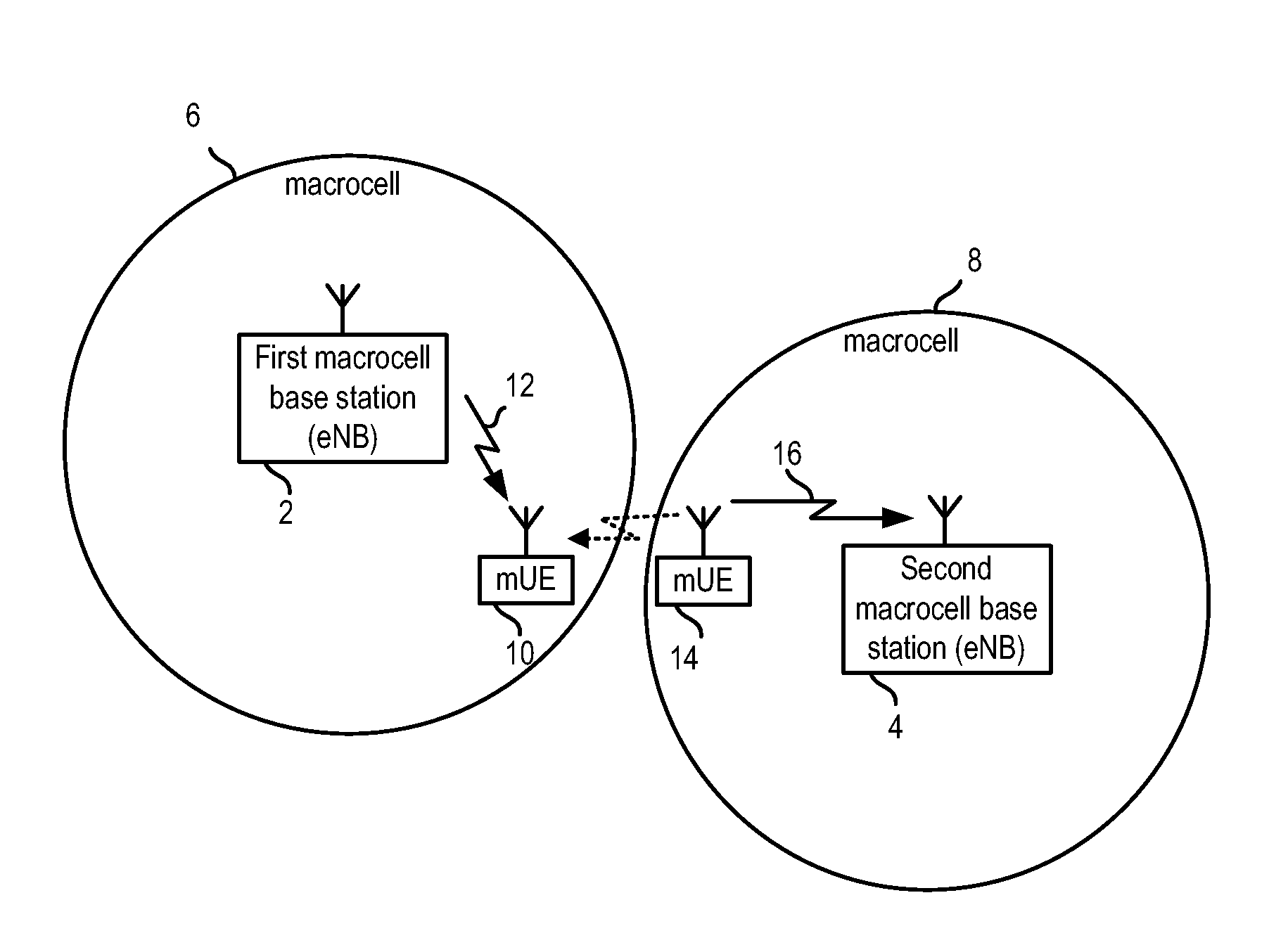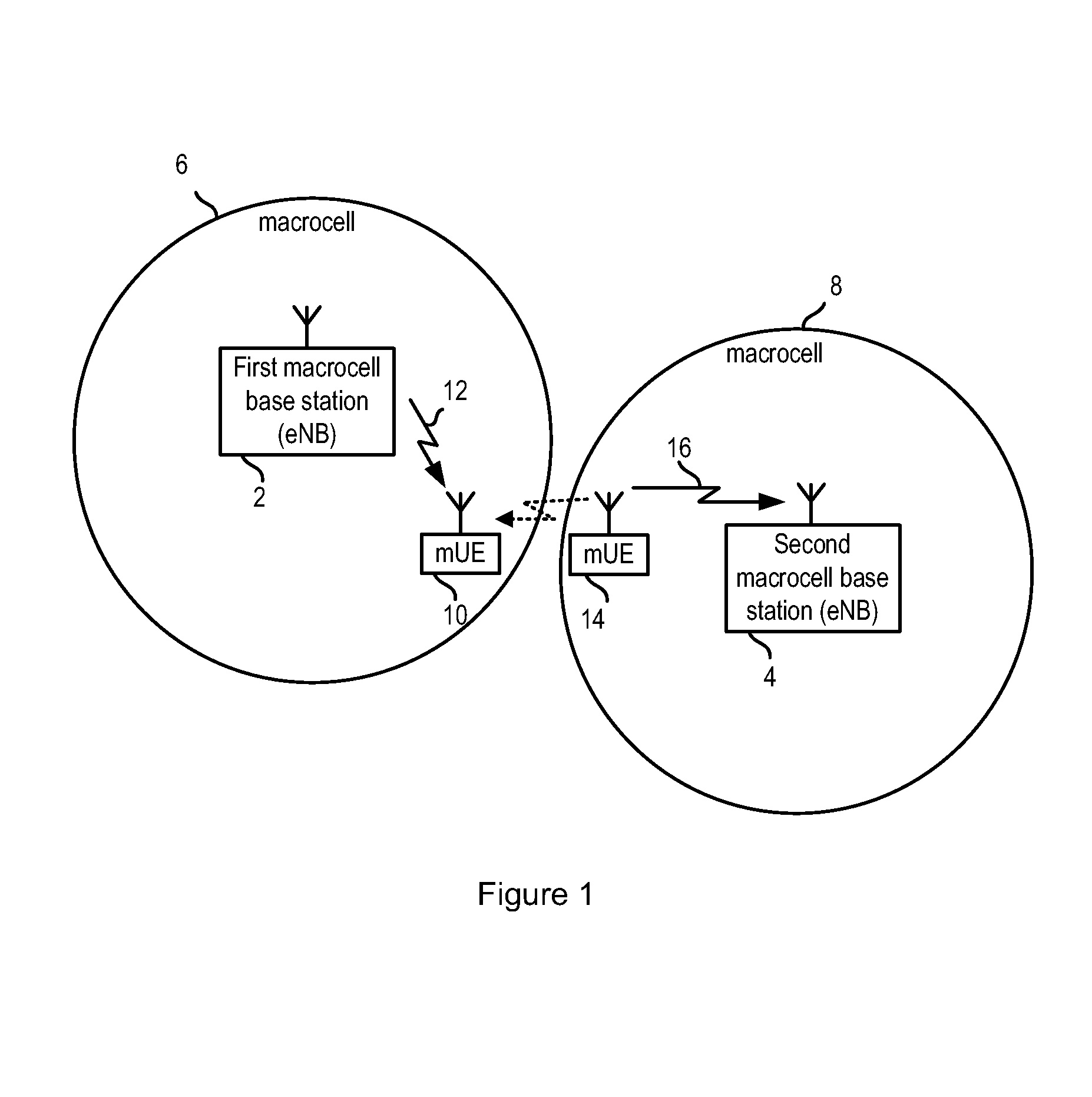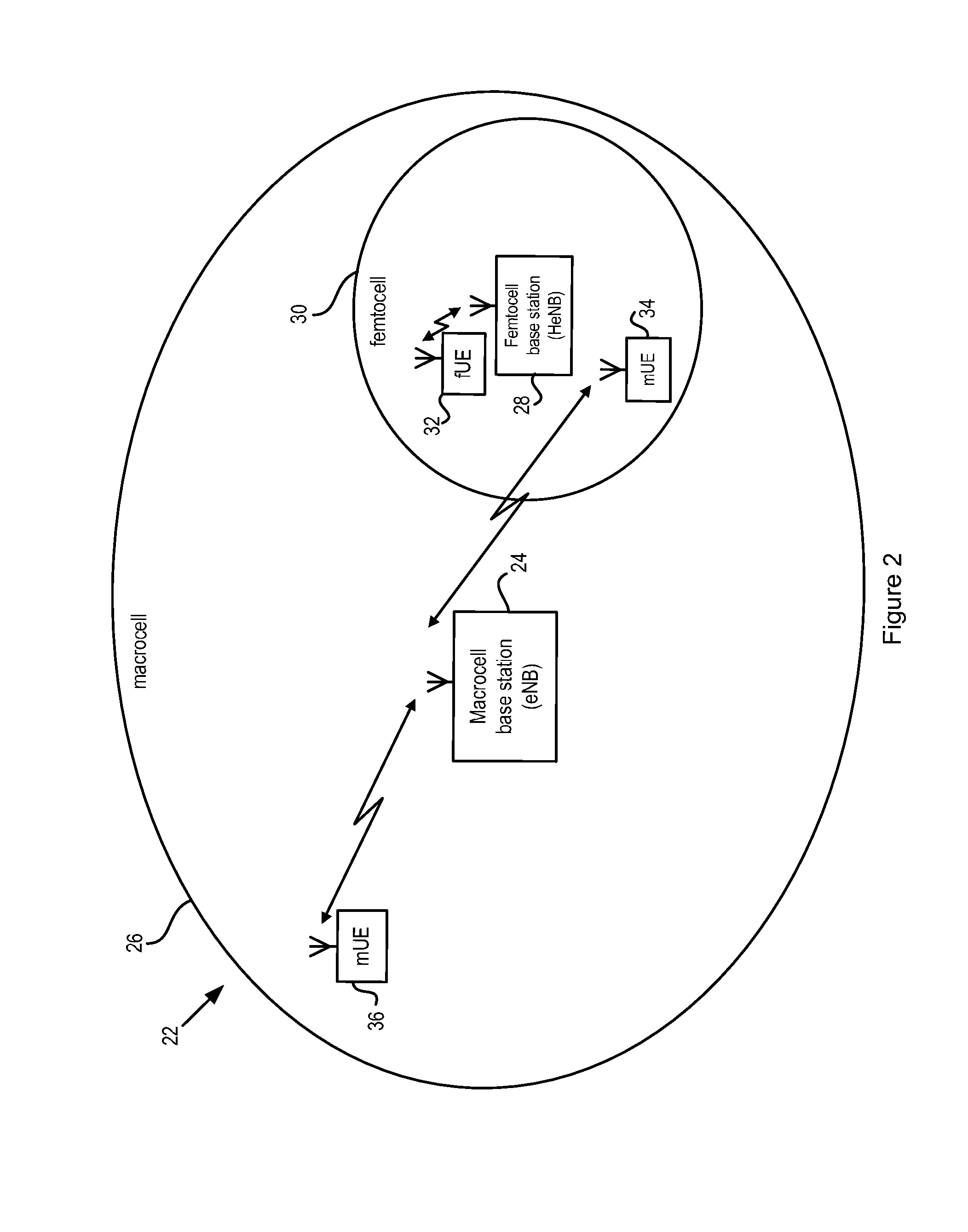Femtocell base station synchronization
a synchronization and macrocell technology, applied in the direction of synchronization arrangement, time-division multiplex, electrical apparatus, etc., can solve the problems of time synchronization, timing uncertainty, and the requirement for significant effort and complexity to achieve building hardware with this accuracy
- Summary
- Abstract
- Description
- Claims
- Application Information
AI Technical Summary
Benefits of technology
Problems solved by technology
Method used
Image
Examples
Embodiment Construction
[0031]Although the invention will be described below with reference to an LTE communication network and femtocell base stations or HeNBs, it will be appreciated that the invention is applicable to any type of second, third or subsequent generation network in which femtocell base stations (whether for home, business or public use), or their equivalents in those networks, can be deployed, such as TD-SCDMA, WiMAX and WCDMA / HSPA, and where the femtocell base station is required to time synchronize with a macrocell base station. Moreover, although in the embodiments below the femtocell base stations and macrocell base stations use the same air interface (LTE), it will be appreciated that the invention can be used in a situation in which the macrocell and femtocell base stations use different air interface schemes (for example the macrocell base stations could use TD-SCDMA or WCDMA while the femtocell base stations use LTE).
[0032]FIG. 2 shows part of an exemplary communication network 22 ...
PUM
 Login to View More
Login to View More Abstract
Description
Claims
Application Information
 Login to View More
Login to View More - R&D
- Intellectual Property
- Life Sciences
- Materials
- Tech Scout
- Unparalleled Data Quality
- Higher Quality Content
- 60% Fewer Hallucinations
Browse by: Latest US Patents, China's latest patents, Technical Efficacy Thesaurus, Application Domain, Technology Topic, Popular Technical Reports.
© 2025 PatSnap. All rights reserved.Legal|Privacy policy|Modern Slavery Act Transparency Statement|Sitemap|About US| Contact US: help@patsnap.com



